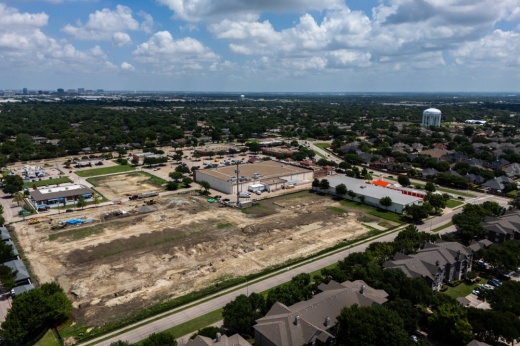Julie Lynch, associate professor and director of the Weitzman Institute for Real Estate at the University of Texas at Dallas, said the city is not currently equipped to meet housing demand from young families or recent college graduates moving into Richardson.
Growth is also tied to the city’s institutional partnerships such as UT Dallas and the Dallas Area Rapid Transit and its business partners, City Manager Don Magner said.
The gist
Magner said missing middle housing in Richardson is defined as diverse housing types that bridge the gap between single-family homes and large apartment buildings, and is meant to accommodate the city’s growing young and senior populations.
Richardson is 98% built out, leaving few opportunities to build new housing, Magner said. Most new developments consist of infill projects—developments using remnant pieces of property—and redeveloping underused property, such as outdated office buildings.Infill projects can be difficult, he said, because developers are often trying to fit housing in oddly-shaped properties.
He added that redevelopment has its own challenges. “It’s very costly to assemble land,” Manger said. “The residual land value in Richardson tends to be higher than in a lot of places, making it difficult for developers to pencil out those deals financially.”
Offering diverse housing types opens the market to more people looking for homes beyond traditional single-family houses, Lynch said. As a result, missing-middle housing can offer more competitively priced products.
“It could serve as a good alternative for people, particularly renters looking to buy ... especially since Richardson has a very good school system, which is paramount for young families,” Lynch said.
The approach
Several projects are underway to help diversify housing types in Richardson, including a development at Belt Line Road and Jupiter Road called Duck Creek Villas, one at Belt Line Road and Grove Street called Valencia Villas, one at 3600 Shiloh Road and a development called Park Hollow that recently broke ground near the intersection of Buckingham Road and Audelia Road.
The development at 3600 Shiloh Road will have 89 townhome units with a starting price of about $500,000, Matt Duenwald, civil engineer with Kimley-Horn, said.
Duck Creek Villas is expected to bring 36 townhome units on a 3-acre lot that is currently undeveloped, Senior Planner Derica Peters said at a Jan. 13 City Council meeting.
Valencia Villas was originally planned for 38 townhomes, but after resident feedback, the number of units was reduced to 34, Jim Dewey, president of JDJR Engineering, said.
Park Hollow, a 6.5-acre development adding 88 townhome units, is expected to open in summer 2026, according to a news release issued by development company Bridge Tower Homes.
Currently, middle housing makes up 19.3% of the housing stock in Richardson.
Beyond land constraints and financial viability, Lynch said city staff must ensure adequate infrastructure is in place to support higher-density housing.
This includes services such as police and fire, road networks and sufficient school system capacity.
What's next
There is demand for young adults and seniors to live in walkable neighborhoods in Richardson. Diverse housing with access to jobs, shopping, dining and recreation would help to meet demand, according to the comprehensive plan.
Most of the remaining undeveloped land in Richardson is zoned for commercial use, meaning a zoning changed would be required to build housing, Magner said.
To better understand the city’s needs, staff commissioned a needs assessment and housing gap analysis and the results are expected later this year.
“The information that garners from those studies will help us be more strategic and more effective at deciding where and how missing middle housing can be incorporated into our overall housing stock,” Magner said.





